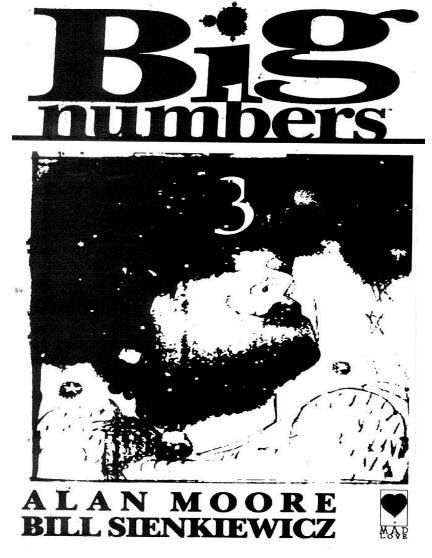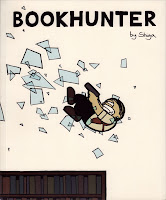So, I read Neil Gaiman's novel CORALINE back around 2002 when it was published. I liked it well enough, not as much as some obviously did (winning as it did several major awards, including the Hugo, Nebula and Bram Stoker awards), but then I'm kind of not the target for the book. I did find it suitably creepy and imaginative, and would certainly recommend it as a gift to a bright 10-year-old girl (which was eventually the fate of my copy). By contrast, Gaiman's recent THE GRAVEYARD BOOK, strikes right at the heart of the dopey 10-year-old boy in me.
Anyway, with
Gaiman on the brain lately I decided to check out, in order, the recent comic book adaptation of CORALINE by P. Craig Russell, the film adaptation by Henry Selick and, during my driving time the last few days, the audiobook of the novel read by Neil Gaiman (and though obviously not part of the audiobook, still intrinsically tied to the Dave McKean illustrations from the print book, which I just discovered I can see, along with several ones not included in the book, on my computer screen with a downloadable copy I've just borrowed from the library without leaving my desk. Ain't technology grand?).
(as an aside, this is the first time I listened to an audiobook in the car. I guess there's an art to it I haven't mastered yet, since I'm not sure I would have absorbed a substantial amount of it if it wasn't a story I was already familiar with. I suppose that comes with practice)
Anyway, it's kind of bizarre experiencing the same basic story in such different versions in such a small period of time, and I got to thinking about the very different approaches to adaptation between the comic and the movie. As you'd expect if you're familiar with Russell's prior work, he maintains a great deal of fidelity to the original, following the structure of the prose story closely, using substantial amounts of the words straight from the book, cutting out some stuff where the images do the job of the description, taking advantage of the comics form, and other stuff no doubt for space constraints or simply because it wouldn't have as much impact in comics as it did in prose.
The movie is a much looser adaptation. The biggest thing is the addition of a whole new major character, the boy Wybie, so everything dealing with him is original to the screen story. And that, really, I just didn't get. Maybe if I didn't know that he didn't belong he wouldn't have been as jarring, but he really didn't fit. There's much more though, things added, taken out or changed all over the place, until you can barely recognize it.
I'm really not sure what I think of the movie at this point. I can't really say I liked it. I'm sure I'd have liked it more if I hadn't been familiar with the original story, but I'm not sure even then it would have risen to the level where I liked it. Appreciated it on a technical level, sure, and liked some parts of it, but it just felt off, somehow.
I mean, I hate to be that guy, as they say. That guy who complains about every little bit of a film adaptation that deviates from the original of a beloved favourite. The "Where's Tom Bombadil? It's a travesty without Tom Bombadil!" guy. For one thing, CORALINE obviously isn't a beloved favourite for me, it's a book I kind of liked. And for another, I kind of expect and want an adaptation to take liberties. That's kind of the point. To pick one of several examples that come to mind, I love the novel SHOELESS JOE, but I like the movie FIELD OF DREAMS even more (in that case I did see the movie first), and I'm always fascinated by how almost every single thing that they changed was for the better, how things that wouldn't work as well on film (like the twin brother) were eliminated and compensated for. Mostly I'm impressed by how the two versions of the story feel the same despite their differences.
And that's what I think I don't get about the film CORALINE. The novel, on paper or read by Gaiman, and Russell's comic book version, those feel like the same story being told. A dark, creepy, dreamlike story, full of quiet horror, designed to make you feel uneasy. I like that. The movie, on the other hand, is loud. It's bombastic. It takes everything that even hints at noise in the original story and amplifies it, turns it up to 11. Which is obviously Selick's style, this is a movie very much in line with his previous movies I've seen (NIGHTMARE BEFORE CHRISTMAS and JAMES AND THE GIANT PEACH).
I just end up wondering why make an adaptation which feels so different from the original. Oddly, the last movie I remember wondering about was also based on a Gaiman story, the film version of the Gaiman/Vess novel STARDUST. My reaction then was that the film-makers seemed to want badly to make a movie like THE PRINCESS BRIDE, and twisted the quite different STARDUST until it fit that role (whereas THE PRINCESS BRIDE is another great example of a film which remained true to its source in remarkably clever ways). And this isn't any kind of an "affront to the author" thing, I know Gaiman participated at least in the promotion of those movies, and maybe in some levels of the production when those changes were made, and seems quite happy with them. It's just that liking CORALINE and STARDUST, I'd kind of like to see someone make a movie that does what they do.
I'm rambling at this point. I had more of a structure in mind when I started typing this, but now it's become more of an excuse to muse on such things. Anyway, as of today I think my favourite version of the story is Russell's adaptation, which feels right, keeps the right bits, makes some smart cuts and looks just gorgeous (and out in paperback for a bargain price of $10 in just a few weeks, still available in a
nice hardcover for not much more). I still like the prose version, on paper or read out loud, maybe even a bit more now than when I first read it. But I guess the movie just isn't for me, as pretty as it sometimes is.
DC COMICS CLASSICS LIBRARY: THE JUSTICE LEAGUE OF AMERICA BY GEORGE PEREZ VOL. 1












